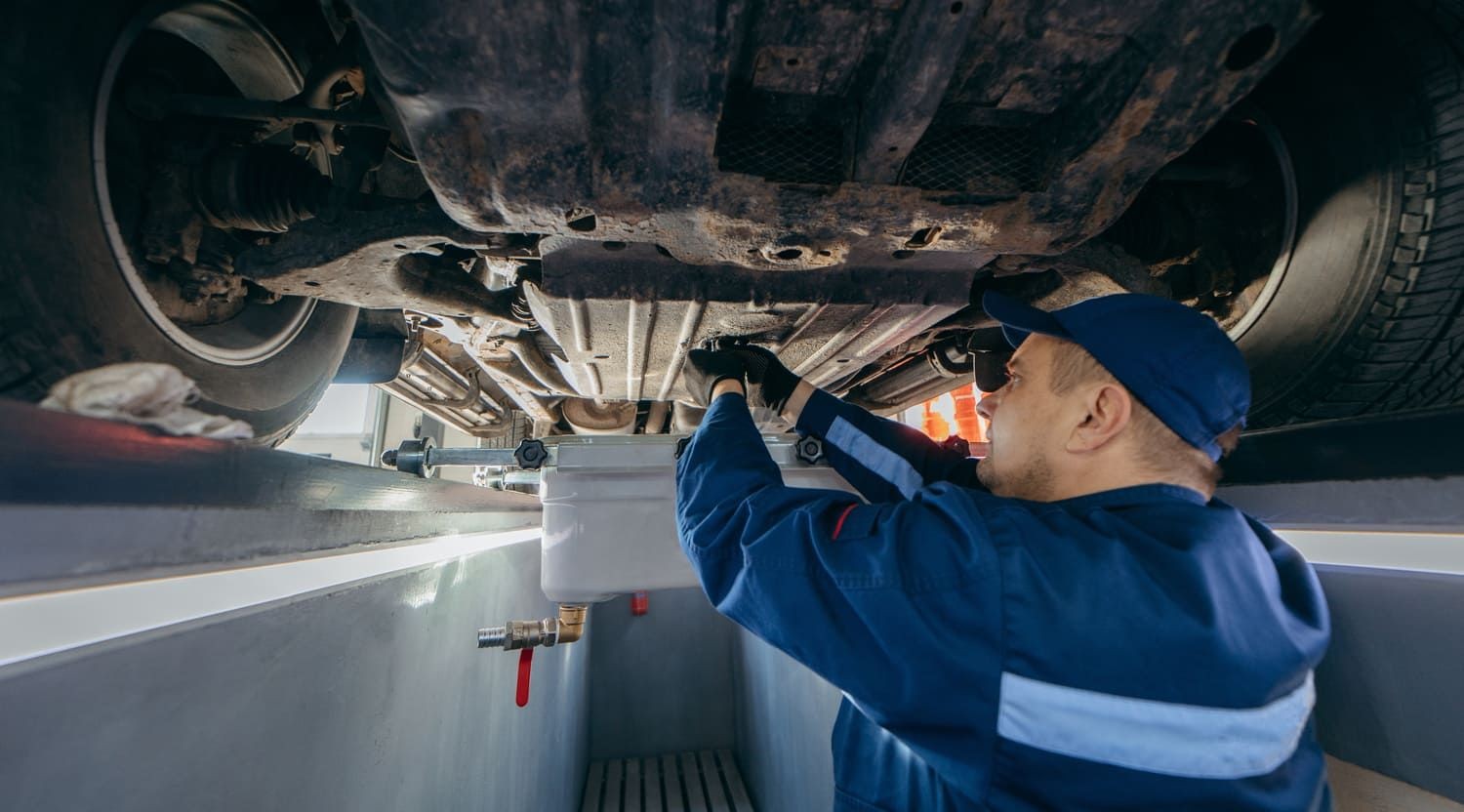Oil is the lifeblood of your car’s engine. It’s responsible for lubricating all the moving parts, reducing friction, and preventing overheating. Without sufficient oil, your engine can suffer serious damage, and your journey will come to an abrupt halt. Unfortunately, oil leaks are a common problem that car owners face. Because engine oil is constantly circulating under pressure, leaks can develop in various locations. Understanding how to identify, address, and repair an oil leak is crucial for maintaining your vehicle’s health and avoiding costly repairs down the line.
In this comprehensive guide, we will delve into the step-by-step process of diagnosing and repairing oil leaks. We’ll cover common causes, troubleshooting tips, and when it’s best to seek professional help. We’ll also touch upon oil leak repair costs to give you a complete picture of what to expect.
Identifying an Oil Leak: Symptoms and Checks
Before you can repair an oil leak, you need to confirm that you actually have one and pinpoint its source. Here are several methods to identify a potential oil leak:
-
Regularly Monitor Your Oil Level: This is the most straightforward way to detect a leak. If you notice your oil level dropping more quickly than usual, and not just due to regular oil consumption, it’s a strong indicator of a leak. Check your dipstick regularly, ideally every few days, to monitor oil levels.
-
Visual Inspection Under the Hood: Grab a flashlight and inspect your engine bay. Look for wet, oily patches on the engine block, particularly around gaskets and seals. Pay close attention to the areas around the valve cover, oil pan, timing chain cover, and oil filter. Oil leaks often start small and become more noticeable over time. Also, check underneath your car after it’s been parked for a while. Look for fresh oil drips on the ground.
-
The Cardboard Test: If you suspect a leak but can’t easily spot it, place a piece of cardboard or newspaper under your engine overnight. In the morning, examine the cardboard. Fresh oil leaks will leave dark brown or black stains. If you see a rainbow sheen in the stain, it’s likely oil. This method helps to confirm a leak and get a general idea of its location based on where the stain appears relative to your engine.
- Smell: Sometimes, you might smell burning oil, especially after driving. This often indicates that oil is leaking onto hot engine components, like the exhaust manifold. This smell is a clear warning sign that needs immediate attention.
Common Causes of Oil Leaks and Basic Troubleshooting
Once you’ve confirmed an oil leak, understanding the common culprits can help you narrow down the problem and assess if it’s something you can tackle yourself or if professional help is needed.
1. Loose Oil Filter or Sump Plug
The oil filter and sump plug (drain plug) are common points for leaks, especially after a recent oil change. If not tightened properly, these components can allow oil to seep out.
How to Check & Repair:
- Oil Filter: Locate your oil filter. If you’re unsure of its location, consult your car’s manual or search online for your specific model. Check for oil residue around the filter’s base. If you find any, try gently tightening the filter by hand. If it was loose, this might solve the problem. After tightening, clean the area and monitor for further leaks.
- Sump Plug: The sump plug is located at the bottom of your oil pan. Inspect it for leaks. If it seems loose, carefully tighten it with a wrench. Be cautious not to overtighten, as this can damage the oil pan. Again, clean the area and monitor for new leaks.
2. Overfilled Engine Oil
Overfilling your engine with oil can create excessive pressure within the crankcase. This pressure can force oil out through the crankcase breather vent or past seals and gaskets.
How to Check & Repair:
- Check Oil Level: Use your dipstick to verify your oil level. If it’s significantly above the “full” mark, you may have overfilled it.
- Drain Excess Oil: If overfilled, you’ll need to drain some oil. The easiest way is to use the sump plug. Position a drain pan underneath, loosen the sump plug slightly to allow oil to drain out slowly, and periodically check the dipstick until the oil level is correct. Then, retighten the sump plug to the correct torque specification (if known, otherwise, snug but not overtight).
3. Deteriorated or Damaged Gaskets
Gaskets are seals made from materials like rubber or cork that create a seal between engine parts. Over time, gaskets can become brittle, crack, or deteriorate due to heat and age, leading to oil leaks. Common gasket leak locations include:
- Valve Cover Gasket: Located at the top of the engine, sealing the valve cover to the cylinder head.
- How to Check: Look for oil leaks around the edges of the valve cover.
- Timing Chain Gasket (or Timing Belt Cover Gasket): Seals the timing chain or belt housing.
- How to Check: Inspect the timing chain cover (usually on the front or side of the engine) for oil leaks along its seams.
- Oil Sump Gasket (Oil Pan Gasket): Seals the oil pan to the bottom of the engine block.
- How to Check: Examine the area where the oil pan attaches to the engine block for leaks. This might require looking from underneath the car.
- Oil Pump Gasket: Seals the oil pump to the engine.
- How to Check: Oil pump locations vary, but leaks may be visible on the front or side of the engine. This gasket is often harder to inspect without removing other components.
Repairing Gaskets: Gasket replacement is usually not a simple DIY task for beginners. It often involves disassembling engine components and requires specific tools and torque specifications. If you suspect a gasket leak, it’s generally recommended to consult a professional mechanic.
4. Worn or Damaged Seals
Seals are similar to gaskets but are designed to seal moving parts. Like gaskets, they can wear out over time and cause leaks. Common seal leak locations include:
- Rear Main Seal: Located where the engine crankshaft connects to the transmission.
- How to Check: Look for leaks at the junction between the engine and transmission, underneath the car. Rear main seal leaks can be more challenging to diagnose and repair.
- Camshaft Seal: Seals around the camshaft(s) at the front of the engine.
- How to Check: Inspect the front of the engine around the camshaft pulleys for oil leaks.
Repairing Seals: Seal replacement is also typically a job for a professional mechanic. It can involve removing transmissions or timing components to access and replace the seals.
Is it Actually an Oil Leak? Differentiating from Other Fluids
Before assuming it’s an oil leak, it’s essential to rule out other potential fluid leaks in your car. Different fluids have distinct characteristics:
- Engine Oil: Typically black or dark brown (when old), slippery, and has a slightly burnt smell.
- Power Steering Fluid: Usually red or clear (depending on type), thinner than oil, and may have a slightly sweet smell.
- Transmission Fluid: Usually reddish or brownish, also thinner than oil, and can have a sweet or petroleum-like smell.
- Coolant (Antifreeze): Often brightly colored (green, pink, orange, yellow), watery consistency, and a sweet smell.
- Brake Fluid: Clear to amber, feels oily but less viscous than engine oil.
- Fuel (Gasoline): Clear to light brown, strong gasoline odor, evaporates quickly.
By observing the color, consistency, and smell of the leaking fluid, you can often determine what type of leak it is. If you’re uncertain, a mechanic can quickly identify the fluid and its source.
When to DIY vs. When to Seek Professional Help for Oil Leak Repair
Whether you can repair an oil leak yourself depends on your mechanical skills, tools, and the source and severity of the leak.
DIY-Friendly Oil Leak Repairs (for confident DIYers):
- Tightening a loose oil filter or sump plug.
- Correcting an overfilled oil level.
- Replacing a valve cover gasket (for some experienced DIYers). This can be manageable with basic tools and a repair manual, but requires careful attention to torque specifications.
When to Call a Professional Mechanic:
- Any leak that is not easily identified or fixed with simple steps.
- Suspected gasket or seal leaks (other than potentially valve cover gasket for experienced DIYers). These repairs often require specialized tools, engine disassembly, and expertise.
- Rear main seal leaks. These are complex and require transmission removal.
- Any significant or persistent oil leak. Driving with a serious oil leak can cause engine damage and is not safe for the long term.
Oil Leak Repair Costs
Oil leak repair costs vary widely depending on the cause of the leak, the parts needed, and labor charges. Here’s a general idea of UK repair costs:
- Leaking Valve Cover Gasket: £75 – £500
- Leaking Rear Main Seal: £450 – £2,000
- Leaking Oil Sump Gasket: £125 – £375
These are estimates, and the actual cost can be influenced by your car’s make and model, as well as the garage you choose. For example, some car brands may have higher parts costs or require specialized labor, which can affect the final bill.
| Car Make | Average Oil Leak Repair Cost |
|---|---|
| Audi | £70 |
| BMW | £75 |
| Ford | £78 |
| MINI | £115 |
| Nissan | £130 |
| Renault | £95 |
| Toyota | £110 |
| Volkswagen | £70 |


Note: These are average costs for common, less severe oil leaks. More complex repairs will cost significantly more.
Conclusion: Act Promptly to Address Oil Leaks
Oil leaks, even seemingly minor ones, should never be ignored. They can lead to significant engine damage, expensive repairs, and environmental hazards. By understanding how to identify oil leaks, knowing the common causes, and taking prompt action, you can protect your car and your wallet. If you’re not comfortable diagnosing or repairing an oil leak yourself, don’t hesitate to consult a qualified mechanic. Addressing the issue early is always the best approach.
For help managing car repair costs, including oil leak repairs, consider options like Bumper. Bumper allows you to split repair bills into interest-free monthly payments, making unexpected car maintenance more manageable.
